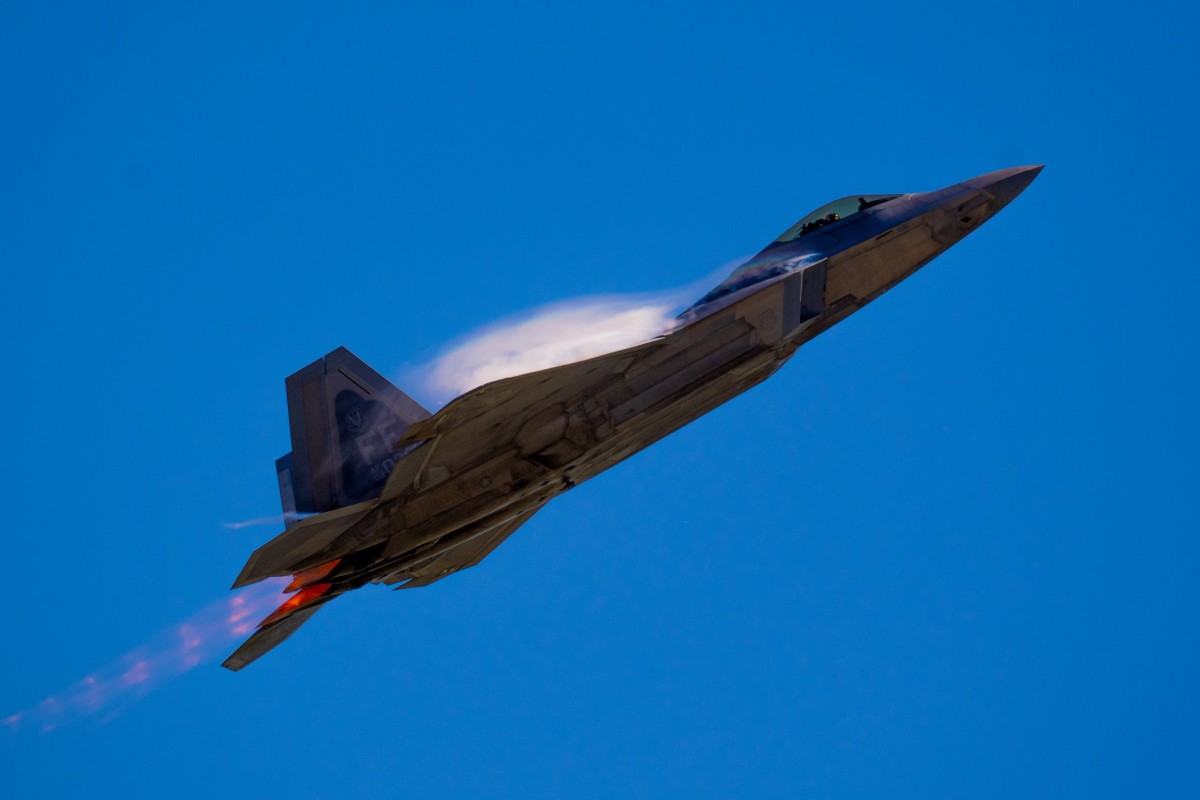In a report released on June 18, the US Government Accountability Office (GAO) has cast doubts on the US Air Force’s plan to retire 32 of its oldest F-22 fighter jets, citing a lack of essential details needed for informed decision-making by the US Congress.
19 US Military Bases Face ‘China Threat’ As Beijing-Backed Firms Continue To Buy Critical Farmland
The US Air Force maintains a fleet of 185 F-22s, categorized into two configurations: the advanced Block 30/35 variant and the older Block 20 jets, which are primarily used for pilot training.
The Block 30/35 jets have upgraded radar systems, enhanced GPS capabilities, and modern missile systems, making them integral to the Air Force’s operational readiness. In contrast, the Block 20 jets, while crucial for training purposes, are deemed expensive to maintain and upgrade.
Air Force Secretary Frank Kendall had explained that upgrading each Block 20 jet to the Block 30 standard would cost over $50 million — a price tag that the Air Force is reluctant to bear amid competing modernization priorities, including the Next-Generation Air Dominance (NGAD) program.
The GAO report highlighted several key concerns regarding the Air Force’s proposal. It criticized the Air Force for failing to adequately document the implications of retiring the Block 20 jets, including its impact on pilot training, operational testing, and overall mission capabilities.
According to the report, the US Air Force has not thoroughly analyzed the costs associated with the maintenance of the current F-22 fleet and the upgrade of the 32 jets in question.
“We respect the Air Force’s need to make difficult budget decisions…[but] this does not alleviate it of the responsibility to document the process and data it uses to make these decisions,” the GAO officials emphasized.
The watchdog agency also expressed skepticism over the Air Force’s projected savings of approximately $1.8 billion, which it claims could be achieved by divesting the Block 20 F-22s.
The GAO argued that these calculations have not been sufficiently validated, raising doubts about the accuracy of cost-saving estimates. The report also underscored operational concerns.
Typically, the F-22 fleet has struggled to meet its mission capability goals, with most combat squadrons maintaining only 24 Block 30/35 jets — just enough to ensure 12 aircraft are mission-ready at any given time.
If the proposed divestment were to proceed, combat squadrons would face increased strain as they would be left with only 18 operational aircraft each, potentially compromising readiness levels.
Additionally, uncertainties surrounding the timeline and feasibility of the NGAD program have further complicated the Air Force’s decision-making process. Without a clear transition plan from the F-22 to the NGAD, the GAO warned of potential delays akin to those seen with other major defense acquisition programs.
In response to these findings, the GAO urged Congress to demand more comprehensive documentation and analysis from the Air Force before approving any divestment plans.
The watchdog agency mentioned that enhanced transparency and accountability were necessary to ensure that premature retirements or insufficient planning did not compromise national defense capabilities.
Watchdog Criticizes Air Force’s Lack of Exploration To Upgrade Block 20 Jets
The watchdog agency also focused on potentially upgrading the Block 20 F-22 jets rather than retiring them. The Air Force argued that these aging jets were no longer effective in countering modern threats, especially from adversaries like China.
The Air Force estimated that merely maintaining the current Block 20 jets would cost approximately $485 million annually, totaling $3.5 billion by the end of the decade.
Upgrading these aircraft to the more advanced Block 35 configuration, as suggested by some members of Congress, would incur a good amount of investment.
The Air Force has argued against such an investment, citing the impending retirement of the entire F-22 fleet in favor of the Next-Generation Air Dominance (NGAD) program around 2030.
However, the GAO report criticized the Air Force for not thoroughly exploring options for upgrading the Block 20 jets to the Block 30/35 standard.
According to Lockheed Martin, the prime contractor for the F-22, such an upgrade would cost at least $3.3 billion and take a minimum of 15 years. This estimate factored in the complexities of restarting production lines for necessary parts, resulting in a per-aircraft cost exceeding that of a new F-35 fighter.
Lockheed Martin informed the GAO that these cost estimates were informal and not submitted in response to a formal request for proposal from the US Air Force. Also, neither the Air Force nor the contractor explored alternative upgrade configurations beyond the existing Block 20 and Block 30/35 options.

The GAO concluded that the Air Force’s incomplete assessment of upgrade options limited the comprehensive insights into the potential consequences and benefits of upgrading the Block 20 jets, which were available to decision-makers in Congress and within the Air Force.
This uncertainty has prompted the US Congress to intervene, including the provisions in the fiscal year 2023 defense bill that prohibits the Air Force from divesting these jets until fiscal year 2028, pending further investigation, including insights from the GAO’s report.
The GAO recommended that Congress consider asking the Air Force to provide detailed data on the impacts and options for divesting or upgrading assets before making any final decisions.
Contact the author at ashishmichel(at)gmail.com




